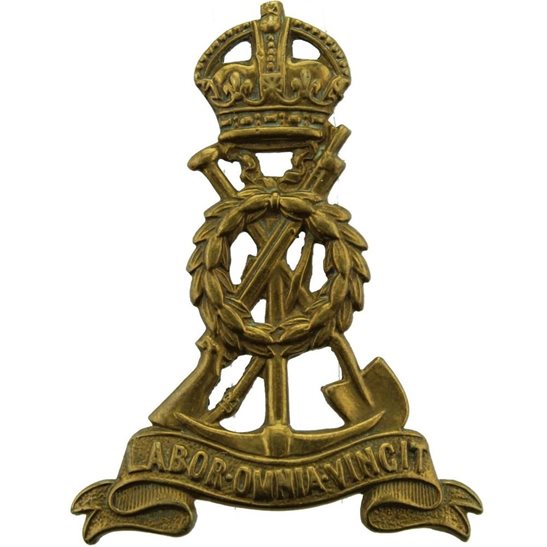Personal Details
Born: In 1896 in Ellesmere, Shropshire.
Family: He was the sixth of nine children born to James Albert Wood, a canal ticket clerk, and his wife Sarah Jane. He married Minnie Roberts on 31 January 1920 at Criftins by Ellesmere, Shropshire. Minnie died in 1927 and George married Harriet Starkey in 1927 in Market Drayton, Shropshire. The couple had five children (possible) Maureen, Anona, Nora, George and James.
Residence: In 1901 his address was Grindley Brook, Whitchurch, Shropshire. By 1911 his family were living at Lock House, Grindley Brook, the address given for him on the 1919 Absent Voters` List. In 1939 he, his wife and children were living at Pound House, Wollerton, Market Drayton, Shropshire.
Employment: He was a plumber in 1911 and 1939.
Died: 1973 in Oswestry, Shropshire.
Military Details
Regiment: Labour Corps (previously King’s Shropshire Light Infantry)
Rank: Lance Corporal
Service Number: 487758 (previously 15585)
Date of Enlistment: Not known
Date of Discharge: 8 May 1919
Reason for Discharge: Demobilisation
Other Information: His brother, James, was killed in action in France on 12 October 1918 and is commemorated on the Whitchurch Town memorial.
George was awarded the Campaign Medals (1915 Star, Victory and British War Medals)

The 1914 Star (also known as 'Pip') was authorised under Special Army Order no. 350 in November 1917 and by an Admiralty Fleet Order in 1918, for award to officers and men of the British and Indian Expeditionary Forces who served in France or Belgium between 5 August and midnight of 22–23 November 1914. The former date is the day after Britain's declaration of war against the Central Powers, and the closing date marks the end of the First Battle of Ypres.
The 1914–15 Star (also known as 'Pip') was instituted in December 1918 and was awarded to officers and men of British and Imperial forces who served against the Central European Powers in any theatre of the Great War between 5 August 1914 and 31 December 1915. The period of eligibility was prior to the introduction of the Military Service Act 1916, which instituted conscription in Britain.
The British War Medal (also known as 'Squeak') was a silver or bronze medal awarded to officers and men of the British and Imperial Forces who either entered a theatre of war or entered service overseas between 5th August 1914 and 11th November 1918 inclusive. This was later extended to services in Russia, Siberia and some other areas in 1919 and 1920. Approximately 6.5 million British War Medals were issued. Approximately 6.4 million of these were the silver versions of this medal. Around 110,000 of a bronze version were issued mainly to Chinese, Maltese and Indian Labour Corps. The front (obv or obverse) of the medal depicts the head of George V. The recipient's service number, rank, name and unit was impressed on the rim.
The Allied Victory Medal (also known as 'Wilfred') was issued by each of the allies. It was decided that each of the allies should each issue their own bronze victory medal with a similar design, similar equivalent wording and identical ribbon. The British medal was designed by W. McMillan. The front depicts a winged classical figure representing victory. Approximately 5.7 million victory medals were issued. Interestingly, eligibility for this medal was more restrictive and not everyone who received the British War Medal ('Squeak') also received the Victory Medal ('Wilfred'). However, in general, all recipients of 'Wilfred' also received 'Squeak' and all recipients of The 1914 Star or The 1914/1915 Star (also known as 'Pip') also received both 'Squeak' and 'Wilfred'. The recipient's service number, rank, name and unit was impressed on the rim.

